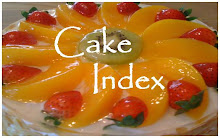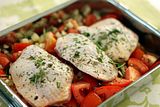1st attempt in July
Cinnamon Buns from a 5* rating recipe from AllRecipes.com with reviews that included "They're to die/kill for." I tried to make them and Jerome said I could kill with them cause they're really hard, not fluffy at all. He suggested I could keep 1 in my handbag & use as a defensive weapon. We ate 1 each & ...
2nd Attempt in Sept
Cinnamon Buns using the same recipe. I just have to try them again and fortunately it worked this time. The buns were nice & soft. Jerome loved the bread. We finished up the 10 buns in 2 days. So I decided that making bread without a bread machine isn't so difficult afterall & I'm going to make more bread at home & stop buying bread.
3rd Attempt in Oct
After my previous success, I search for recipes from other food blogs, trying to make some soft white bread. I found out that many recipes have almost the same ingredients, just varying quantities. So acting smart, I decided to experiment & created my recipe during quantities that I could easily remember. I put the dough into a bread tin, expecting to get a nice loaf of bread in the end. But in the end, it turned out looking more like a cake, it didn't rise above the tin. I had to steam the 'bread' the next morning to soften it a little. The bread was very dense & heavy. I could hardly get myself to swallow it down! So experiment failed...
So decided that I better find out more about bread making before I try making another loaf. I borrowed this very informative book on bread. It's very informative with lots of pictures. From information about the kind of flour, different kinds of bread, different kinds of glazing effects, toppings, etc... All the pictures are included just so you can see for yourself. You can see the difference between a shiny-golden brown crust & a golden crust for yourself. Great!

Learning Points So far:
1) Golden Rule: Always stick to 1 system, the metric or imperial.
2) Make sure all ingredients are at room temperature.
3) Ideal temperature to develop yeast is 37 degrees celcius.
4) Salt inhibits the development of the yeast. Separate addition of yeast & salt.
5) When using an electric mixer, be careful about overmixing/overworking the dough using high speed. Some kneading by hand is still required. Don't be lazy. It's a good opportunity for some exercise,
6) Knead dough on floured surface until it becomes elastic & easy to handle.
7) Proof dough in a plastic or glass bowl, NOT metal. Metal conducts heat unevenly & the yeast will react with the metal & there will be a metallic taste. (I've proof the dough in a stainless steel bowl so far)
8) Do not allow the dough to over-proof or over-rise. ( I have thought that the longer you allow the dough to proof, the fluffier & softer is the bread.)
9) To test if rising is complete, gently press the dough with fingertip. Dough should spring back gradually. If indentation springs back immediately, dough is still under-risen. If the indentation doesn't rise up at all, the dough had over-risen. Remedy: Knock the dough back, reshape & proof again.
10) Freeze cooled baked bread to keep longer, up to 3 months. NOT refrigerator. Defrost in preheat oven of 200 degrees celcius for about 45 mins.






















No comments:
Post a Comment